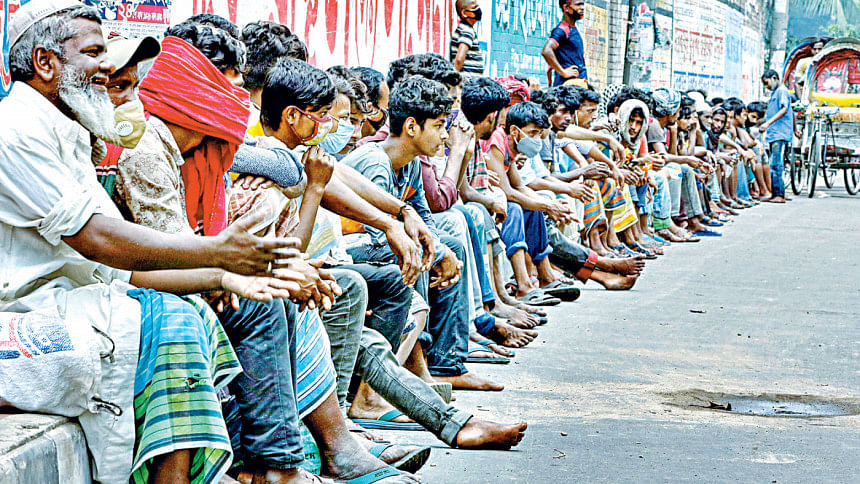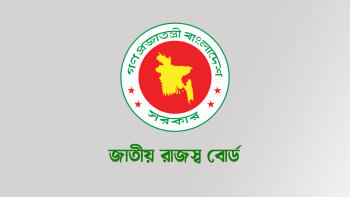Technology is a useful servant. Let’s harness it for social protection, social distancing and community testing.

The government is hard-pressed in responding to the raging coronavirus pandemic with every resource, instrument, policy and strategy it can get its hands on.
A key lesson from COVID-19 we cannot afford to forget, at least for a while, is that social protection is as important an instrument as social distancing that countries must deploy to fight the virus.
The virus is destined to stay with us, alive and spreading, until vaccines and treatments are found.
Until then, if not even later, social protection is a two-in-one instrument -- it protects both lives and livelihoods.
It protects lives by obviating the need for seeking work outside the home when harsh measures to contain the virus spread are in place.
It protects livelihoods by supporting millions of hardworking people who have lost self and wage employment with little or no savings to draw from. It helps fight hunger, a non-contagious but no less deadly human deprivation.
The government has decided to expand the existing Old Age and Widow allowance programmes, implemented by social welfare ministry, by Tk 815 crore.
It has also announced an emergency cash transfer programme for households impoverished by coronavirus with a provision of Tk 760 crore. Who in government will implement this programme is yet to be decided.
It is also providing free food to the poor and selling rice under the Open Market Sale (OMS) programme at a highly subsidised price of Tk 10 per kg. The government has further promised housing assistance for homeless people.
How to deliver social protection quickly and efficiently are old questions -- and coronavirus has added a new dimension.
How do you deliver social protection safely when the country is in lockdown and there is a need to protect the poor and the vulnerable population from contracting COVID-19?
Richard Chirchir, director and senior management information specialist for development pathways, in a recent blog titled "7 ways technology can help the social protection response" provides some useful ideas.
Quick, efficient and safe delivery of social protection is possible by leveraging existing technology solutions without having to build these systems from scratch.
What is critical at this difficult time is to ensure that assistance is delivered to intended beneficiaries on a timely basis.
Technology can play a crucial role in augmenting delivery in several ways, depending on the contextual constraints and opportunities.
A key consideration in the design is the parameters on which information need to be collected to register the beneficiaries and deliver the assistance.
This is not the time to design restrictive poverty-targeted schemes.
Essential information parameters such as ID numbers, names, addresses, mobile numbers and transaction profile can be collected instead of additional monitoring information such as assets, household composition and socio-economic details.
The accumulated historical transactional database of the mobile financial service (MFS) contains a wealth of information, which, if used smartly, can identify the needy from transaction records.
This database is already linked to the payment service provider systems that are regulated by the Bangladesh Bank (BB). Therefore, financial regulatory supervision can be assured.
This will facilitate direct cash transfers from the government accounts, via the banks, to the accounts of the beneficiaries.
Cashless payment delivery through mobile money accounts should be encouraged to avoid risks of crowding and the spreading of the virus through the handling of cash.
Bangladesh has the capacity to device multiple bank delivery mechanisms under which benefits can be withdrawn from different commercial banks through the MFS system. These banks will receive the appropriate amount of money through BB's Bangladesh Electronic Funds Transfer Network (BFTN).
Most Bangladeshis have national identification (NID), access of adults to mobile phone devices is close to 90 per cent, and the MFS system has an established capacity in the use of technology.
People who have access to smartphones can open their accounts instantly as long as they have the NID.
Those who don't have smartphones can go to one of the 60,000 digital KYC centres of the MFS operators across the county with their NIDs, where they would be able to instantly open the MFS accounts.
If the appropriate authority instructs to open accounts, the needy people would be able to do so without much hassle.
Following a BB notice on April 6 making it a requirement for workers in export-oriented industries to have MFS or bank account, MFS account openings surged from 20,000 per day to 90,000. bKash, Rocket and Nagad have together added 2.6 million new accounts in April.
Liquidity constraints at the agent level pose a challenge that can be handled. Before coronavirus, there was no evidence of liquidity constraint at the MFS agent point.
MFS agents are independent entrepreneurs who offer MFS services in exchange for commissions. However, under coronavirus restrictions, banks are understandably open for very limited hours.
The electronic fund flow channels such as BFTN are also operating for limited hours.
Without their full engagement, MFS providers are facing severe challenges in cash management and in keeping the agents active.
MFS agents' activities have declined 20 to 30 per cent due to these disruptions, which will go away as and when the banking hours return to normalcy.
Meanwhile, some regulatory tweaking can generate additional ease in the MFS system.
For example, extending the daily and monthly fund transfer limits from bank accounts and cards to MFS accounts could ease the liquidity constraint to some extent. Currently, these limits are Tk 30,000 daily and Tk 2,00,000 monthly.
Increasing the limits will increase digital liquidity in the MFS system, thus reducing dependency on the physical agent point.
This kind of adjustments can allow customers who have bank accounts to bring more money from their banks to MFS accounts to pay for their groceries, utility bills, domestic helps' monthly salaries and so on.
These are verified customers who do not pose any additional risk. This reform will, therefore, help make the nation's payment systems adapt to physical distancing.
Digital solutions can also be used to manage food-based social assistance.
Monitoring the delivery of food at the last-mile has always been a challenge.
Reach of mobile connectivity and innovation in ICT have enabled real-time data interchange until the last level of service delivery using low data usage applications in mobile devices.
Low-cost mobile technologies can be developed to enable the delivery of food entitlements at the doorstep of the beneficiary. These require using business models analogous to ones that e-commerce entrepreneurs use to deliver their orders.
Why do people have to line up densely in public places to get the food rations in digital Bangladesh?
There is no time to re-invent when the existing wheels are good to drive. Typically, new information systems would take months if not years to develop and implement.
However, if requirements are simple, then functional information systems can be developed from existing data in a matter of weeks.
I have no doubt our IT, MFS and e-commerce professionals can quickly come up with interoperable systems allowing information exchange and real-time monitoring of last-mile delivery if given a chance.
This would depend on collaborations with technology providers and the responsible public agencies such as the ministries of social welfare, disaster management and relief, and finance and the BB.
Different countries are pursuing very different strategies in testing for COVID-19.
The World Health Organisation supports a policy of widespread testing. When the healthcare system is overloaded, you don't want a lot of non-sick people coming to health facilities and risking contagion.
The digital health community is trying a slew of new tools aiming to monitor the spread of the disease and facilitate better treatment.
The database used for the social protection programmes can be used to draw random samples of workers to do aggressive testing, once reliable tests and kits are available.
Notwithstanding the limits of scientific understanding of COVID-19 immunity, tests at the community level will be critical in the weeks and months ahead for disease surveillance, therapeutics and return-to-work screenings.
COVID-19 has brought to the forefront the synergy between social protection and public health.
Lockdown and social protection buy time for building the health system readiness to unlock the process of reopening the economy.
Let us remake the Bangladesh surprise through a strong and coordinated effort in social protection, health and digital platforms for delivering social assistance, facilitating physical distancing and conducting community testing in urban and rural areas.
The success of COVID-19 digital initiatives can be significantly enhanced by establishing feedback systems in coordination with the existing governance systems in the institutions within and outside the government.
The writer is an economist

 For all latest news, follow The Daily Star's Google News channel.
For all latest news, follow The Daily Star's Google News channel. 



Comments